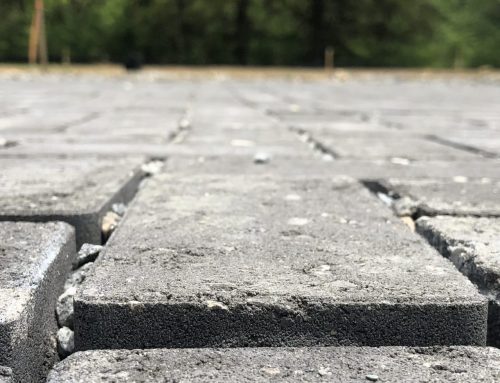Stormwater infrastructure – be it pipes, ponds, or rain gardens – is typically designed to convey or capture runoff flows associated with a design storm, the magnitude of which is based on a probability distribution of observed rainfall events. One of the underlying assumptions of this design approach is that the rainfall probability distribution is static. However, recent climate trends across much of the country indicate large events are occurring with greater frequency, casting doubt on (1) the notion of a rainfall distribution that is static in time and (2) that stormwater infrastructure designed by our current design storm approach can be expected to provide the intended level of service throughout its lifetime.
The upper Midwest is one area of the country where large events have been observed with greater frequency in the recent climate record. In response, the University of Minnesota has teamed with the Minnehaha Creek Watershed District, the Cities of Minneapolis and Victoria, and climate researchers from Antioch University and Syntectic International to evaluate potential impacts to stormwater infrastructure due to climate change. We are using the EPA SWMM model to examine the effects of a range of mid-century precipitation scenarios, derived from regionally-downscaled global climate models, on the existing stormwater infrastructure in two case studies: (1) a built-out residential pipeshed in South Minneapolis and (2) the growing community of Victoria located at the urban-rural fringe of the metro area. According to climate models, the current 10-year storm by which the storm sewer network in these communities was designed (4.1 inches by Technical Paper 40) is expected to increase 25% (5.1 in) to 150% (10.1 in) by the mid-21st century under moderate to pessimistic emissions scenarios. Using this range as rainfall input in EPA SWMM, we are seeking to answer the following questions:
- How resilient is the existing stormwater infrastructure to projected changes in precipitation? To what extent is flooding expected to increase in these communities?
- How do predicted changes in climate interact with predicted population growth and development patterns in communities such as Victoria?
- Can stormwater systems be adapted (e.g., through pipe upsizing or increasing the infiltrative capacity of the landscape through LID) to provide a similar level of service under mid-21st century climate projections? What are the costs of adapting (or not adapting) stormwater infrastructure?
- Can we make informed, local-scale infrastructure adaptation decisions in the midst of uncertainty surrounding long-term climate projections?
In addition to examining these technical questions, our team has initiated a public outreach program aimed at engaging local stakeholders in community-driven adaptation planning for stormwater management. We’ve held several workshops in Minneapolis and Victoria, and are developing a framework from which other communities can proceed with their own adaptation planning process. While the adaptive process will hold many commonalities across communities, the actual measures adopted may look very different. For instance, as indicated by our modeling for this project, adapting Minneapolis’ existing stormwater system to a “most-likely” mid-century precipitation scenario will require a combination of pipe upsizing, detention (likely in the form of underground storage), and infiltration. The projected costs for these upgrades ranged from $40 to $70 million across the 1100 ac pipeshed. In contrast, Victoria’s existing stormwater network was found to be relatively resilient to projected precipitation increases; even under the most pessimistic climate scenario, excess flooding could be contained completely in streets below the curb elevation or within public open spaces such as parks and golf courses. The resiliency of Victoria’s stormwater system can be attributed to development policies such as buffer setbacks and wetland conservation that have acted to preserve ecosystem services related to hydrologic regulation.
Accounting for the non-stationarity of precipitation by incorporating projected changes in precipitation patterns into stormwater design certainly marks a shift in practice, particularly in the US. In light of this, we’re interested in your thoughts on the issue as we look toward integrating climate science practically into stormwater management.
- Within your spheres, are projected climate changes perceived as a challenge to stormwater management?
- Uncertainty in climate models has certainly been posited as one barrier to infrastructure adaptation. What others do you foresee or have you encountered?
- Do you know of other locations in which climate change projections are being actively incorporated into stormwater management planning and design? If so, are there specific drivers in place to initiate such considerations?
If you’d like more information about the Minnehaha Creek stormwater adaptation study, please visit the following website: http://www.minnehahacreek.org/project/weather-extreme-trends
We’d also like to acknowledge our project collaborators – Latham Stack of Syntectic International, Jim Gruber and Michael Simpson of Antioch University, Leslie Yetka of the Minnehaha Creek Watershed District – as well as NOAA for funding this work.
Trisha Moore is a post-doctoral associate at St. Anthony Falls Laboratory, University of Minnesota. She obtained her graduate degrees at Kansas State University (M.S.) and North Carolina State University (PhD). Her research experience includes assessment of ecosystem service provision by ecologically-based stormwater treatment systems, carbon footprinting of stormwater infrastructure, and, currently, the impacts of stormwater infiltration on stream baseflow and implications of extreme precipitation trends on the capacity of stormwater infrastructure. Trisha is excited to be joining the faculty of the Kansas State Biological and Agricultural Engineering department this winter where she will continue research in watershed management and ecological engineering.







